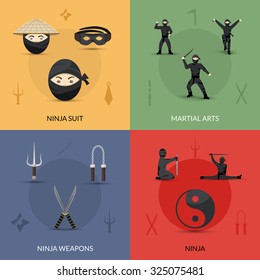Come Check Out The Fascinating World Of Martial Arts, Where Old Traditions Fulfill Contemporary Efficiency - A Journey Into Background And Ideology Waits For.
Come Check Out The Fascinating World Of Martial Arts, Where Old Traditions Fulfill Contemporary Efficiency - A Journey Into Background And Ideology Waits For.
Blog Article
Short Article Produced By-Ryberg Stokes
Step into the old globe where martial arts were born out of necessity in diverse areas. are martial arts for kids crafted one-of-a-kind fighting designs intertwined with historic contexts. https://www.monett-times.com/2023/05/30/kenpo-classes-teach-children-self-defense-discipline/ developed over centuries through dedicated practice and social exchanges. Today, modern martial arts mix standard elements for optimal performance. Philosophically, martial arts emphasize technique, self-improvement, and consistency. Regard, humbleness, and equilibrium are foundational principles guiding professionals towards development and resilience. Check out the midsts of this abundant background and ideology to discover the extensive impacts forming this long-lasting self-control.
Beginnings of Martial Arts
Fighting style originated in various regions worldwide, evolving as practical battle systems to defend against dangers. These old fighting designs were developed out of necessity, with each culture crafting methods suited to their distinct environments and challenges. From the grappling arts of Jujutsu in Japan to the striking methods of Martial art in China, martial arts were deeply linked with the historical, social, and social fabric of their particular societies.
In Japan, the samurai class refined martial arts like Kenjutsu, the art of the sword, which later developed right into the more popularized kind of Kendo. At the same time, in Brazil, Capoeira became a blend of dancing and battle, created by enslaved Africans as a means to resist oppression. Each martial art lugs with it an abundant background and philosophy, mirroring the worths and ideas of individuals that exercised them.
As you look into the beginnings of martial arts, you uncover a tapestry of human resourcefulness, durability, and the stubborn spirit of warriors throughout time.
Evolution of Methods
With centuries of technique and improvement, combat strategies within various martial arts have actually undergone a profound development. From old designs like Martial art and Karate to a lot more modern-day disciplines such as Brazilian Jiu-Jitsu and Krav Maga, the development of techniques has actually been driven by a mix of cultural impacts, sensible applications, and technical innovations.
One substantial aspect of this advancement is the cross-pollination of methods in between various martial arts. For instance, methods from standard Japanese Jiu-Jitsu were integrated into the development of Judo by Jigoro Kano in the late 19th century. This blending of designs has actually led to the advancement of crossbreed martial arts like Mixed Martial Arts (MMA), which incorporate elements of striking, grappling, and submission strategies.
In addition, the advancement of techniques has been formed by the enhancing focus on efficiency and effectiveness in fight. Practitioners have continually looked for to improve their strategies with rigorous training, trial and error, and competitors, resulting in the development of extremely specialized and efficient combating styles. On the whole, the evolution of techniques in martial arts mirrors the dynamic nature of fight and the continuous mission for renovation and development.
Philosophical Structures
Checking out the underlying thoughtful principles of martial arts supplies understanding right into their core values and directing ideas. At the heart of several martial arts disciplines is the concept of technique itself. By training your body and mind to work as one cohesive unit, you grow technique that prolongs past the dojo or health club into daily life. This discipline includes respect, humbleness, and self-discipline, forming not just your physical capacities but also your personality.
An additional essential philosophical structure in martial arts is the concept of constant self-improvement. The journey of mastering a fighting style is nonstop, with specialists frequently aiming to better themselves, both literally and psychologically. This concentrate on development fosters strength, perseverance, and a growth state of mind that can be put on all facets of life.
Additionally, martial arts emphasize the importance of harmony and balance. Strategies are created to use an opponent's power versus them, highlighting the concept of producing and rerouting force rather than meeting it head-on. This ideology encompasses interpersonal connections, promoting peaceful resolutions and mutual understanding. By accepting these philosophical structures, martial musicians not just boost their fight abilities but also grow a lifestyle centered on personal growth, regard, and consistency.
Verdict
To conclude, the background and approach of martial arts use a rich tapestry of custom, discipline, and self-improvement.
Take for instance the tale of Bruce Lee, who reinvented martial arts by mixing different styles and approaches to create his own distinct form of Jeet Kune Do.
With devotion and technology, martial artists continue to press boundaries and inspire others to reach their full potential both in battle and in life.
